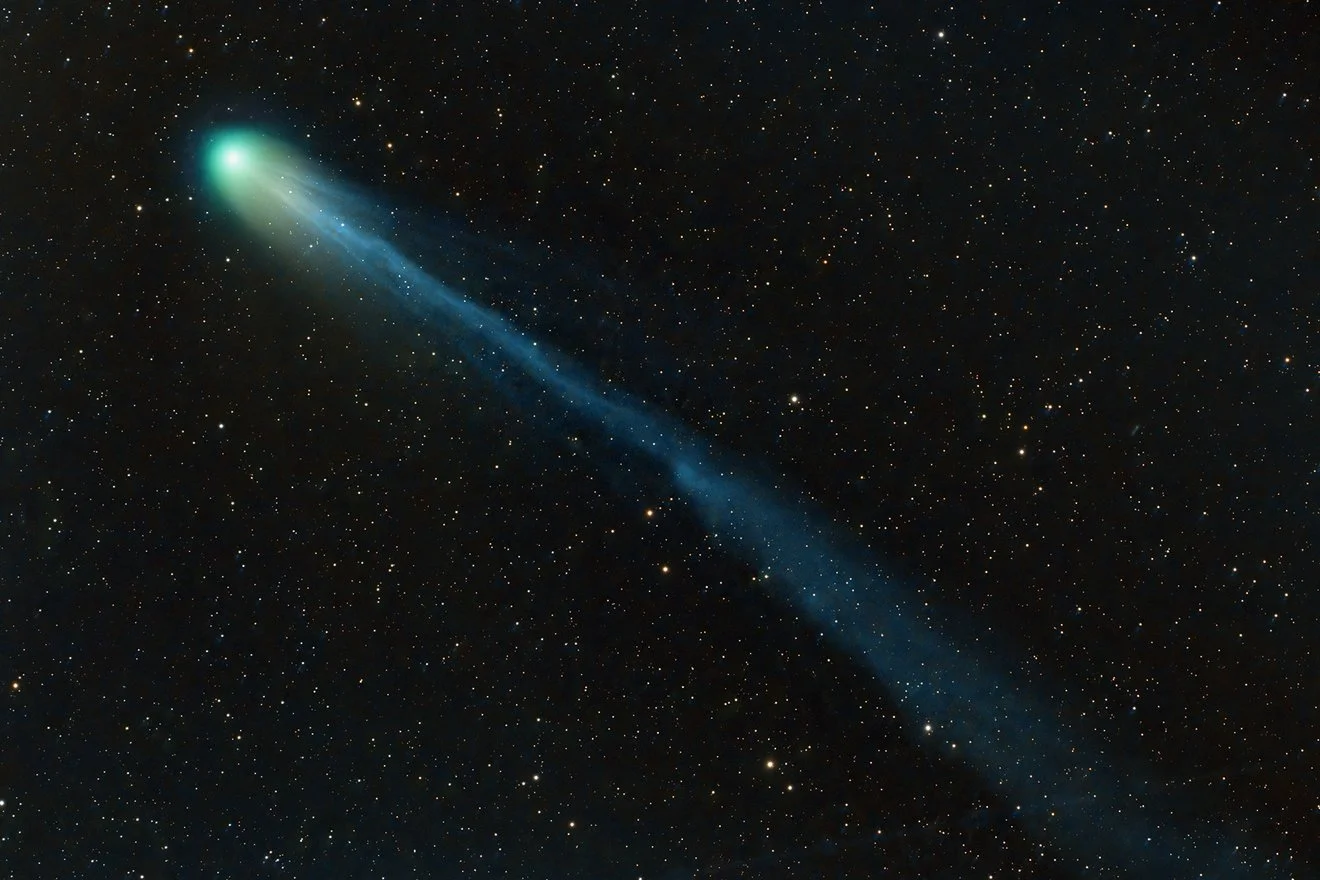
AAPOD2 Image Archives
A Blade in the Sky (12P/Pons-Brooks)
Comet 12P/Pons-Brooks, discovered by Jean-Louis Pons and William Robert Brooks, is currently putting on a spectacular show in the night sky. This comet, with its characteristic bright coma and long, luminous tail, has earned the nickname "the Blade" due to its distinctive, sharp appearance against the backdrop of the cosmos. The tail of the comet, composed of dust and gas, stretches across the sky, reflecting sunlight and creating a mesmerizing display.
As 12P/Pons-Brooks traverses its highly elliptical orbit around the Sun, it offers a unique opportunity for both amateur and professional astronomers to study its composition and behavior. Comets like Pons-Brooks are considered ancient relics from the early solar system, providing valuable insights into the conditions and materials present during its formation. Observing this celestial spectacle not only brings beauty to the night sky but also contributes to our understanding of the solar system's history.
12P/Pons–Brooks March 13 2024
Discovered independently by Jean-Louis Pons and William Robert Brooks, Comet Pons-Brooks graces the night sky as a transient visitor from the outer reaches of our solar system. As it journeys along its elliptical orbit around the Sun, the comet illuminates the heavens with its glowing coma and distinctive tail, captivating observers with its celestial dance. Comets like Pons-Brooks are ancient remnants from the early days of the solar system, composed of icy materials, dust, and organic compounds. Studying these comets provides valuable insights into the conditions and processes that prevailed during the formation of our cosmic neighborhood.
The appearance of Comet Pons-Brooks offers a rare opportunity for astronomers and skywatchers alike to witness a dynamic celestial phenomenon. By studying its trajectory, composition, and behavior, scientists can unravel the mysteries of cometary evolution and better understand the role of these icy bodies in shaping the history of our solar system. As Pons-Brooks graces our skies with its luminous presence, it serves as a reminder of the dynamic nature of our cosmic environment and the ongoing interplay between celestial forces that govern the movements of objects in space.
Comet 12P/Pons-Brooks
Comet 12/p Pons-Brooks, a transient visitor from the distant reaches of the solar system, graces the night sky with its ethereal presence. Named after its discoverers, Jean-Louis Pons and William Robert Brooks, this comet embarks on a journey through the cosmos, leaving a trail of wonder and fascination in its wake.
As Pons-Brooks traverses the depths of space, it captivates astronomers and stargazers alike with its luminous tail and dynamic behavior. Comets like Pons-Brooks are relics from the early days of the solar system, offering valuable insights into the conditions that prevailed during its formation.
By studying the trajectory and composition of Pons-Brooks, scientists unlock the secrets of its origins and evolution, shedding light on the mysteries of cometary activity and the dynamics of the solar system. As this celestial wanderer continues its journey through the cosmos, it serves as a reminder of the interconnectedness of the universe and the beauty that lies beyond the confines of our planet.




